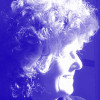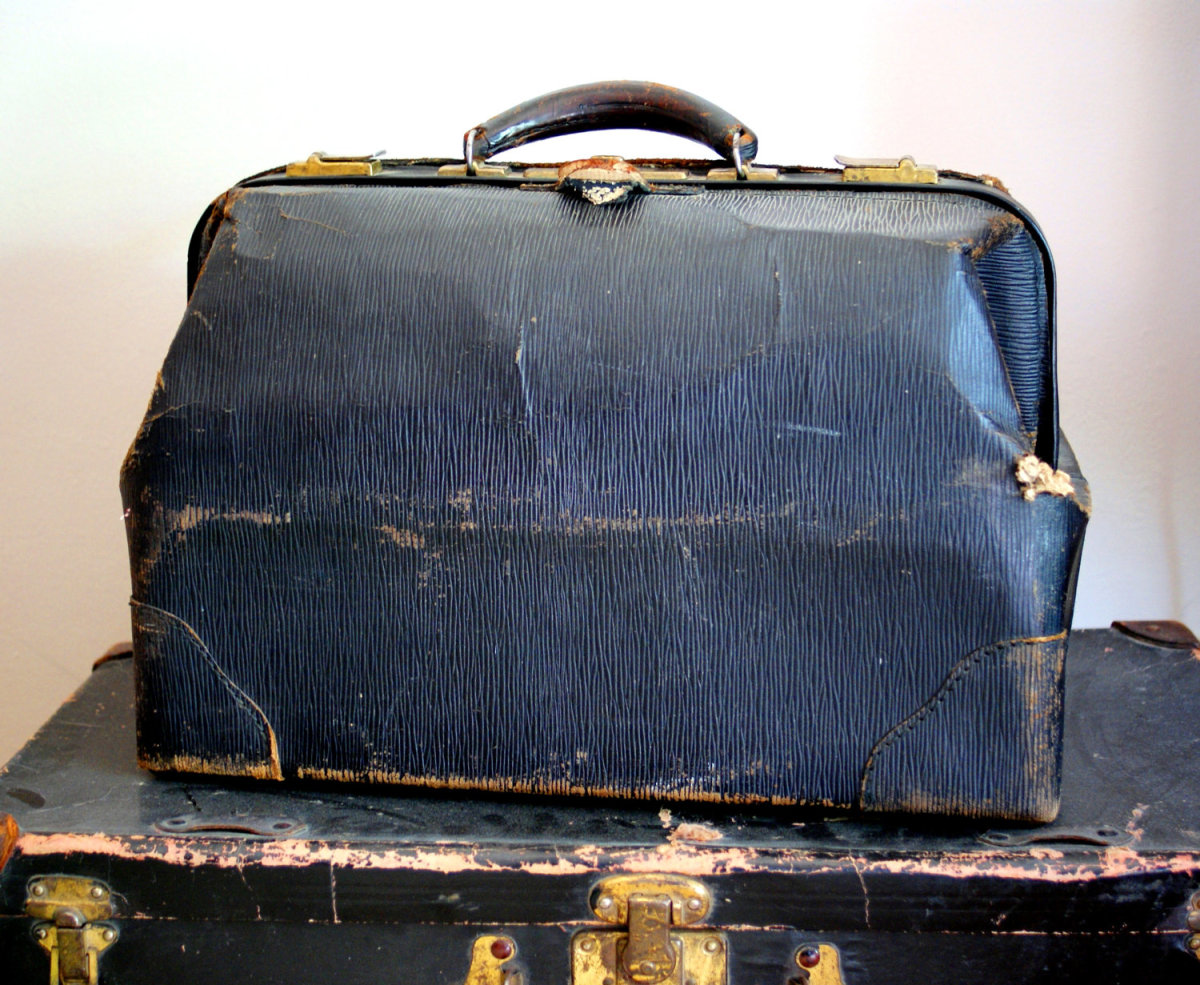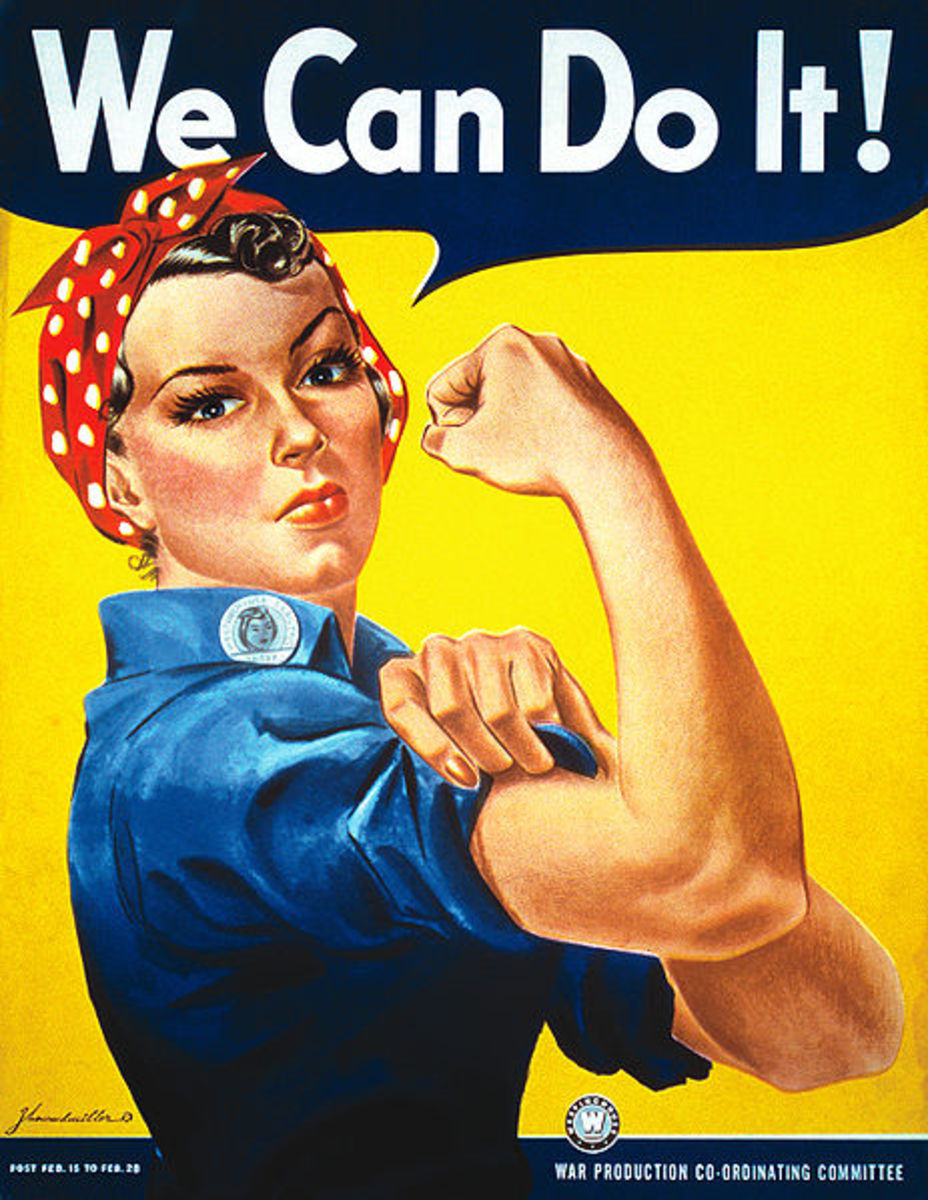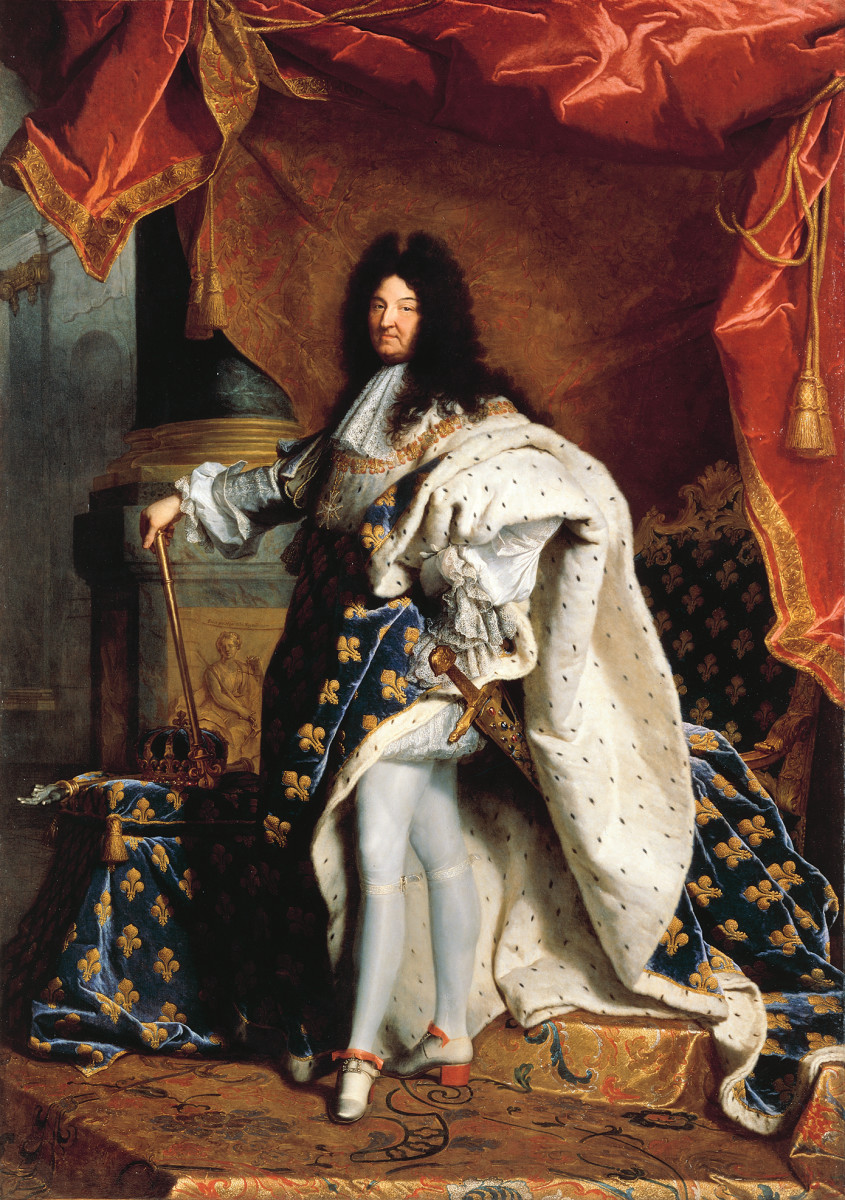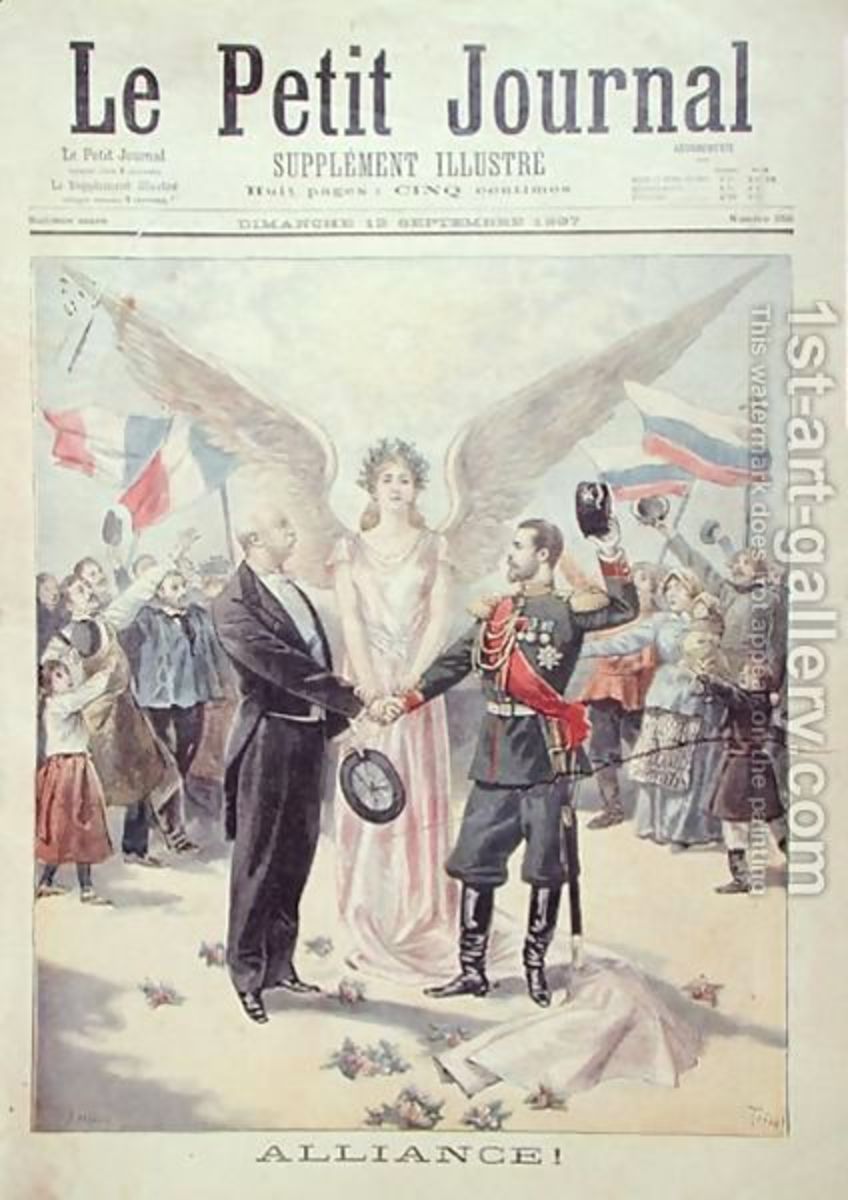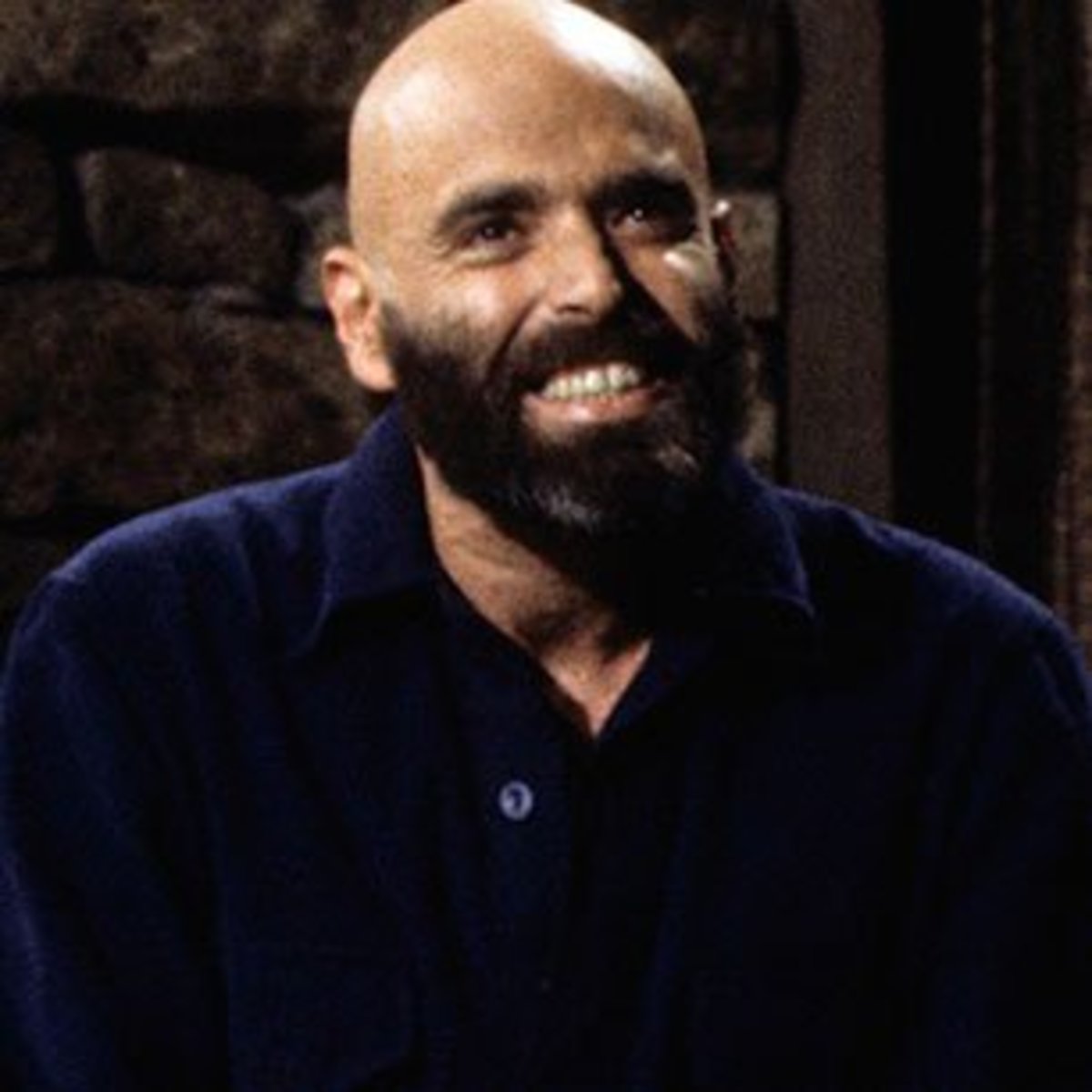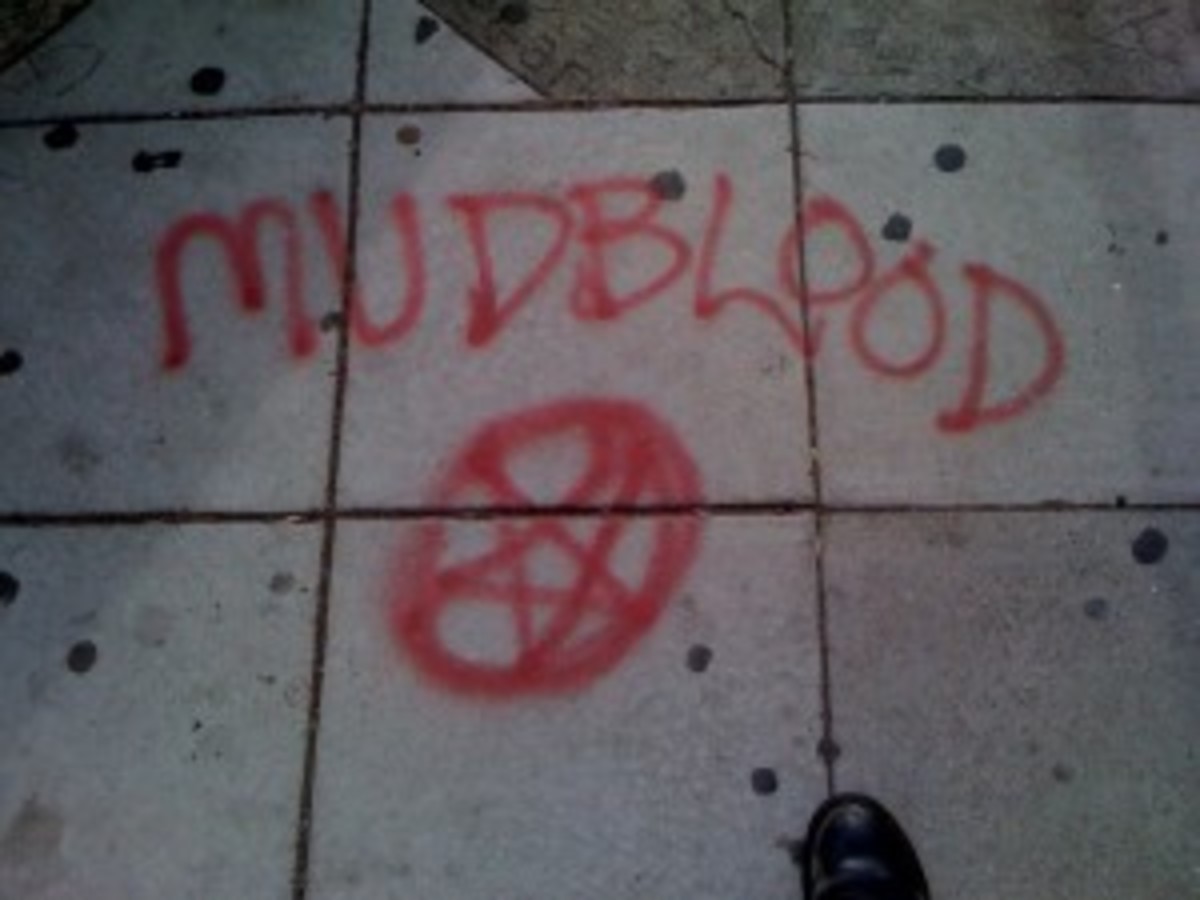Pure Andrew Miller
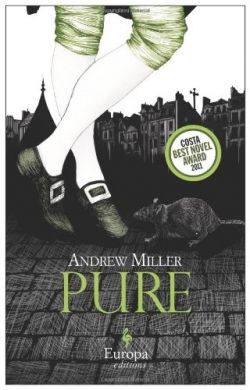
Andrew Miller - Pure Pleasure!
Pure by Andrew Miller is a story set in Paris in 1785, pestilence and revolution are in the air. The problem? The cemetery, Les Innocents, in the centre of Paris is full, it stinks and it's poisoning Paris. The task - to empty the cemetery and to make it pure.
The person charged with purifying Paris is a young and ambitious engineer, Jean-Baptiste Baratte.
The task is monumental - the human remains in the Saints Innocents Cemetery go down 30 meters. Fifty thousand bodies were buried in just once month during an outbreak of plague. Baratte makes no bones about it though, and throws himself into organising this massively complex and complicated feat, only to find that feelings about the graveyard and its inhabitants run very high indeed.
And the moribund inhabitants of the graves of the cemetery? We are told that preparations are being made for them at a quarry near the Port d'Enfer - south of the river.
A story about destruction - destruction of much more than the church of Saint Innocents and its graveyard. It tackles the great themes of life: birth and death, innocence and experience, purity and decay, love and violence reason and madness.
This is a true story (and true stories are the best) as the cemetery of the Innocents did exist, the remains in the tombs and mass graves were exhumed, the corpses were deposited in what is now called the Paris Catacombs.
Recommended by the ladies of our book club - always a good start. Not only is this book an gem for historians, but it's a deceptively simple and gripping read full of Paris and romance, all told in a light and easy writing style. Definitely one for your reading list.
Buy Pure by Andrew Miller on Amazon.com - A year in the life and death of a cemetery

Pure Images of Dark and Light
Andrew Miller paints a dance of death before our very eyes
We first meet the young engineer, Jean-Baptiste Baratte, who longs to build bridges as he waits in the Palace of Versailles. He has an audience with the Minister charged with the dismantling of the Church of Les Innocents and it's ancient and over-stuffed cemetery.
For a thousand years bodies had been piled into the grave yard, many in communal pits filled to bursting during outbreaks of the plague. Houses had grow up all around Les Innocents. The bodies and bones were falling into the surrounding cellars. The well water was polluted by the dead. The stench was so overpowering that you could taste it in your tea.
The solution? Exhume the bodies and move the remains to the disused quarries and network of underground tunnels now known as the Catacombs de Paris.
Easy? The task turns out to be a great burden. Local people are afraid of disturbing the dead, doctors are afraid of the plague and disease and the engineer is afraid of collapse as he digs to a depth of thirty meters.
Thirty miners from Valenciennes, the pits where Baratte had previously worked, were brought in to dig. A hard work force to manage. Women, young and innocent, older and experienced, played a vital part in the feeding and housing of the men. Innocence and experience played out in harmony, then tragedy and violence.
The men dug in the cold, frozen earth, then in the heat of Spring and, finally the suffocating heat of the summer nights. All the time fires were kept burning to consume the evil and poisonous gas, fires to purify the air and clean the threat of pestilence and disease.
As an artist, one thing I love about this book is the vivid imagery. Fabulously Fin de Siecle in feel, the shadow of the revolution hangs over the whole story and becomes explicit in the mysterious writing that appears by night over Paris.
Amid the dark and the fire passed the gloriously attired men and women of Paris, priests in black, a woman in red. Baratte himself sloughs off the funereal black and functionally warm coat of the countryside in order to deck himself out in lettuce green silk that leaves him shivering in the Paris winter. Follow him, and his organ-playing companion, through the streets of eighteenth century city life and meet the Parisians who fill the day with work and the nights with carousing.
Romance blooms, lethal madness is brought on by jealousy, scientific experiments are carried on on the dead. Deliciously macabre, brilliantly evocative and gorgeously evoked. Fires at night, a woman in red walking the streets of Paris who captures Baratte's eye, nightlife, crowds, simple living, hardship, chanting priests with shiny shoes who pray and bless the bone-filled carts as they trundle to the quarries outside the city walls.
I've made real some of the pictures described in words. There are prints of the old cemetery, the charnel houses with their dance of death murals and burden of skulls left out to dry. There are prints too of the market place that grew up on the cleared site after the work was complete. After the purification of the cemetery of Les Innocents. After Paris had been made pure again.
I can only say that this is one of the best books that I've read in a very long time and one that will stay in my memory for much, much longer. A very good read indeed.
Cemetery of Les Innocents c. 1500
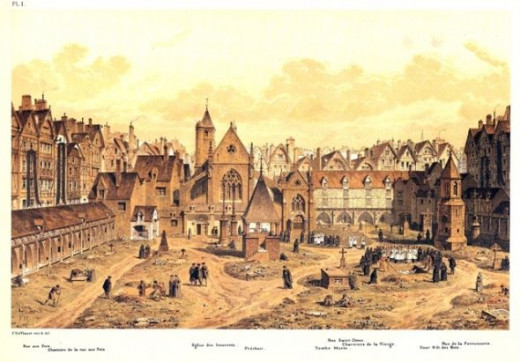
Image courtesy of Wikipedia: Le cimetire des Saint-Innocents / Engraving of the Saints Innocents cemetery in Paris, c;1550
By Th. Hoffbauer end of 19th century Public Domain Image - copyright expired
Who Is Andrew Miller?
Not to be confused with the (other) writer Andrew Miller
Andrew Miller was born in Bristol on 29 April 1960 grew up in the West Country (UK), and the went on to live in Spain, Japan, Ireland and France.
The Other Andrew Miller
Confusingly, there seems to be another Andrew Miller, born 1974 in London - and also a writer. This Anderw Miller is a British journalist and author who studied literature at Cambridge and Princeton, joined The Economist and wrote The Earl of Petticoat Lane in 2006. In 2011 Miller's novel Snowdrops
was nominated for the Man Booker Prize in 2011. Forgive me if I get them confused!
Some Andrew Miller Facts
- Born in Bristol on 29 April 1960
- Gained a first class degree in English at Middlesex Polytechnic, UK
- 1991 studied Creative Writing at the University of East Anglia
- 1995 PhD in Critical and Creative Writing, Lancaster University
- Miller currently lives in Witham Friary in Somerset.
Pure Was 2011 Winner of the Costa Book Award - 2011 Costa Book Of The Year Announced
Andrew Miller and His 'Morbid Obsession'
It might come as no surprise to learn that the author of Pure is fascinated with death and decay and Andrew Miller admits as much. Miller first came across the story in The Hour of Our Death; a study of western funerary customs by Philippe Aris. The reference was brief but it caught Andrew Miller's imagination.
Listen to Pure on Radio 4 - Pure was adapted for Radio 4 Book at Bedtime
Radio 4 adaptations and productions are nearly always excellent, so why not settle down and listen to Pure, abridged by Jeremy Osborne and read by John Sessions.
A rare treat indeed!
- BBC Radio 4
Pure by Andrew Miller was Book at Bedtime
An Interview With Andrew Miller - Andrew Miller speaks on R4 Book Club about his novel 'Pure'
You can also hear Miller talking about Pure on Radio 4's Book Club when James Naughtie interview Miller. These are some of the question posed and Miller's answers:
Q What was Paris like in the years before the revolution?
A It was densely populated, lively, full of smells, and much of what we see of Paris now was what existed at the time.
Q Which came first, the story of the dismantling of the cemetery, or the themes of violence, women's role in society , mental illness?
A Initially interested in the engineer and the people he knew, the cemetery itself and the city of Paris. The themes take care of themselves.
Q James Naughtie points out that Miller's first book was about a doctor who couldn't feel pain, also set in the 18th century. What was it about the 18th century that Miller likes so much?
A I grew up in an 18th century town, Bath, in an 18th century house. The 18th century is distant but not too distant.
Q The title 'Pure' intrigues me.
A It's called Pure because nothing is. In the past he's been an idealist, a Utopian thinker, and so Baratte is on a journey which shows that life is not so simple.
Q Does J-B meet the criteria of being a 'man who does not mind a little unpleasantness'?
A I think he does. He is confident, practical - ordinary resources, but he has a heroic task and he, heroically, keeps going.
Q Would people be put off by the macabre comments on the back of the book?
A It has Gothic elements, crypts, cemeteries. People like the macabre, especially younger people. The macabre, the Gothic but with a bit of poetry added.
Andrew Miller reads from the book and chooses the passage when the Flemish miners are about to start digging.
Q The story is told in the present tense. Did you worry about it working?
A Likes the close-up feeling the present tense gives.
Q Is it difficult to portray the smell of a rotting cemetery?
A The smell of the cemetery has a physical presence and Baratte, over time, becomes more used to it. Cities would have had powerful smells that we are no longer accustomed to.
Q The cemetery has a powerful role in the hearts and minds of the people. Why did Jeanne, the person most connected to the cemetery, help to dismantle it and what is your feeling about death in general?
A Jeanne is like a figure in a fairy tale, a bit like Red Riding Hood, described early on as "a little auburn-haired emissary of Death". She goes along with the destruction of the cemetery because she is both biddable and is impressed with Jean-Baptiste, and it's exciting. The book's attitude is that the dead are not objects of horror, but towards the end Baratte almost has an affinity with the bones. The cemetery is a stage on which the action taking place in Paris is acted out. The site itself was only the size of a football pitch.
Q There was no indication that Lecoeur was capable of violence. Was the lack of subplot leading up to a vicious attack done on purpose to invoke shock?
A I like sometimes to not overly trail things. There were indications that Lecoeur was a man at the end of his tether. He suddenly commits a terrible act of violence. He is a character to pity, lonely and who does the right thing at the end.
Q Why didn't Baratte wasn't given the voice of the revolution?
A Jean-Baptiste was a country boy with an ambition to build roads and bridges. Armande, the organist, is a revolutionary, but Jean-Baptise is a little uneasy about it all. Many people wouldn't be aware of what was to happen. He holds on to a faith in reason which is broken down by events. Reason in the revolution was literally worshiped and yet the leaders of the revolution were lunatic. Miller says he's not anti-enlightenment.
Q The female characters, like Jeanne, 'an administering angel' and Heloise were not fully rounded.
A The views of the women were mediated through the men. I would hope that Heloise was not a stock figure. When Miller went to see the site he noticed a woman walking around the square, quite slowly, and he eventually realised what she was doing there. Les Innocents was close to the rue Saint Denis, notorious for prostitution.
Q Is the inclusion of Dr Guillotine an ironic one? His role in the revolution was a humane one.
A Dr Guillotine was a medical man in the 50s. No evidence that he was actually there at the time. Likes to have ambiguous, medical figures in his novels. Miller came from a medical family. Better not to delve too deeply in these things. Miller used to like reading medical magazines like the Lancet - was fascinated by 'blood and guts'.
Q Sense of fun running through the whole narrative. Is the cat a red herring?
A Miller likes the fact that fun was found in the book. Miller says the cat doesn't mean anything. He always has an animal of some sort.
Q Whole obsession of death and decay. What is the fascination with the turning of life to dust?
A When younger his interest was romantic but somewhere in your late 40s there's a taste of death in the mouth. Baratte comes to feel a kinship with the dead and they should not be seen as alien and repulsive.
Most enlightening
The Palace of Versailles
A young engineer meets the minister
Jean-Baptiste Baratte, having traveled from Belleme in Normandy, finds himself waiting to meet the minister who will engage him to destroy and demolish the cemetery of the Innocents. Having received his orders and a purse of money, he finds himself lost in a palace of mirrors, corridors and doors.

Cimetire des Saints-Innocents - A Bit of Background History
The Saints Innocents Cemetery (in French Cimetire des Saints-Innocents or Cimetire des Innocents) was a cemetery in Paris used from the Middle Ages to the late 18th century.
Not only was the cemetery one of the largest cemeteries in Paris, but it was also one of the oldest and during the times of plague it had been used for mass graves until by the late 1700s the grave yard had become a health risk. In 1780, and 1786 the bones and remains were dug up and carted to the old, underground quarries near Montparnasse, the Catacombs.
The cemetery took its name (referring to the Biblical Massacre of the Innocents) from the attached church of the Saints Innocents that has now also disappeared. The site is now known as The Place Joachim-du-Bellay in the Les Halles district.
NOTE: In Anne Rice's The Vampire Lestat, Armand's coven of vampires resides in the Cimetire des Innocents when Lestat first encounters them, and they remain there until shortly before the Cemetery is finally destroyed.

Paris and the Cemetery of Les Innocents - The places that feature in Pure
I like to be able to picture the places that are described in books. I like to imagine a walk through Paris taken by the characters. I like maps. I've added a few of the landmarks and streets around and about the cemetery of the Innocents - all the better to imagine myself there with Jean-Baptiste.
Paris - Plan of Les Innocents
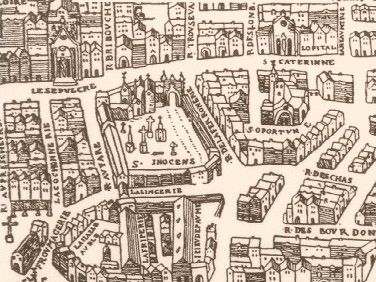
Image courtesy of Wikipedia: Le Paris de Nicolas Flamel (Saint Jacques de la Boucherie - Rue de Marivaux - Cimetire des Innocents) Date 1551/52 Plan de Ble
Public Domain Image - copyright expired
Charnier with Mural of the Danse Macabre
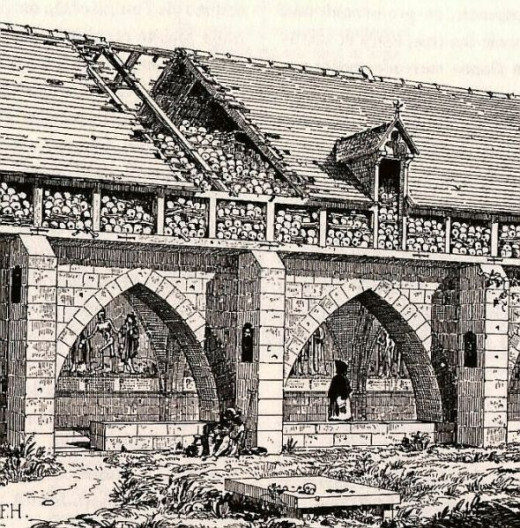
Image courtesy of Wikipedia: from the web site Chez-Alice
Public Domain Image - copyright expired
Miller describes these charnel houses in Pure: he tells us that the south charnel was a 'gallery of blackened stone' next to the rue de la Ferronnerie. The building consisted of a series of arches into a gallery. Some of the arches were bared with high gates of rusted iron. Over these arches you can see the openings, 'garrets' where bones, some blackened like the stone of the buildings, have been 'packed behind iron grilles'.
The Palais Royal in Paris
No sooner has Jean-Baptiste Baratte arrived in his lodgings overlooking the fetid cemetery des Innocents than he meets the eccentric organist of the Church of the Innocents who immediately takes him on a drunken tour of this area of Paris, introducing him to drinking and eating places,rue de les Fromagerie, the street of cheeses and the ribbald entertainments of the Palais Royal.
Other Places Mentioned in Pure
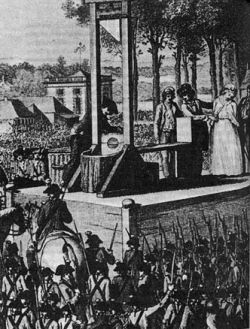
The Shadow of the Guillotine
The scent of revolution
The shadow of the revolution and the guillotine hangs in the air as solidly as the smell of the cemetery that can be tasted in the tea. Andrew Miller literally gives the revolution life by including the historical figure of the medical man, Dr Guillotine, in the story, despite there being no evidence of his attending the demise of Les Innocents.
Dr Guillotine, of course, was the inventor of the guillotine, meant to despatch the aristocracy quickly and humanely. The shadow of the gallows hangs over this book.
Image courtesy of Wikipedia: The execution of Queen Marie Antoinette of France, 1794 by Isidore Stanislas Helman (1743-1806) / Charles Monnet (1732–1808) Public Domain Image - copyright expired
The Market on the Site of the Saints Innocents Cemetery in 1850 - Engraving by Hoffbauer.
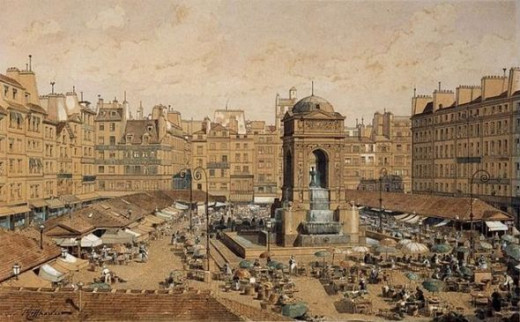
Image courtesy of Wikipedia: Le cimetire des Saint-Innocents / Engraving of the Saints Innocents in Paris, 1850
By Th. Hoffbauer end of 19th century Public Domain Image - copyright expired
From the site Cimitiers de France

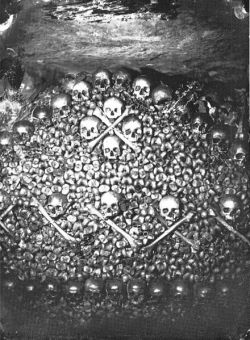
Catacombes de Paris Date 1861
Photograph by Nadar
The Catacombes de Paris is an ossuary (a site used to house human bones) buried deep under the city of Paris. Just south of the city gate then called the "Barrire d'Enfer" and now renamed the Place Denfert-Rochereau, the bones of about six million people are stashed away in caves and tunnels, remnants of Paris's stone mines. From the late 18th century it became a place to store the remains of the dead and it soon became a tourist attraction open to the public from 1874, closed only briefly between September 2009 and 19 December 2009 due to vandalism.
These tunnels are just a fraction of the underground system that lies beneath the city, called "les carrires de Paris or "the quarries of Paris". The whole network is sometimes called 'the catacombs'. Read more about this fascinating subject: Wikipedia
Image courtesy of Wikipedia, Public Domain Image - copyright expired
Other Books By Andrew Miller - Miller's books are a beautiful education
Finished 'Casanova' and really enjoyed it. Simple language but very rich and gently beautiful. Had to get my dictionary out quite a few times.
I'll have to do a bit of research to sort out fact from fiction but it makes very interesting reading. Bought a version of Casanova's memoires so back again when I've read those.

I Love My Books - And I love reading them!

Where Did I Find My Information? - Links to my sources
- The Guardian Reviews Pure by Andrew Miller
Pure - Andrew Miller: my morbid obsession
By Kira Cochrane The Guardian, Wednesday 25 January 2012 - Chez-Alice
check out this page for more pictures of Les Innocents - Cimitieres de France
An excellent resource - Wikipedia
Catacombes de Paris - BBC Radio 4
Pure by Andrew Miller was Book at Bedtime
© 2013 Barbara Walton
